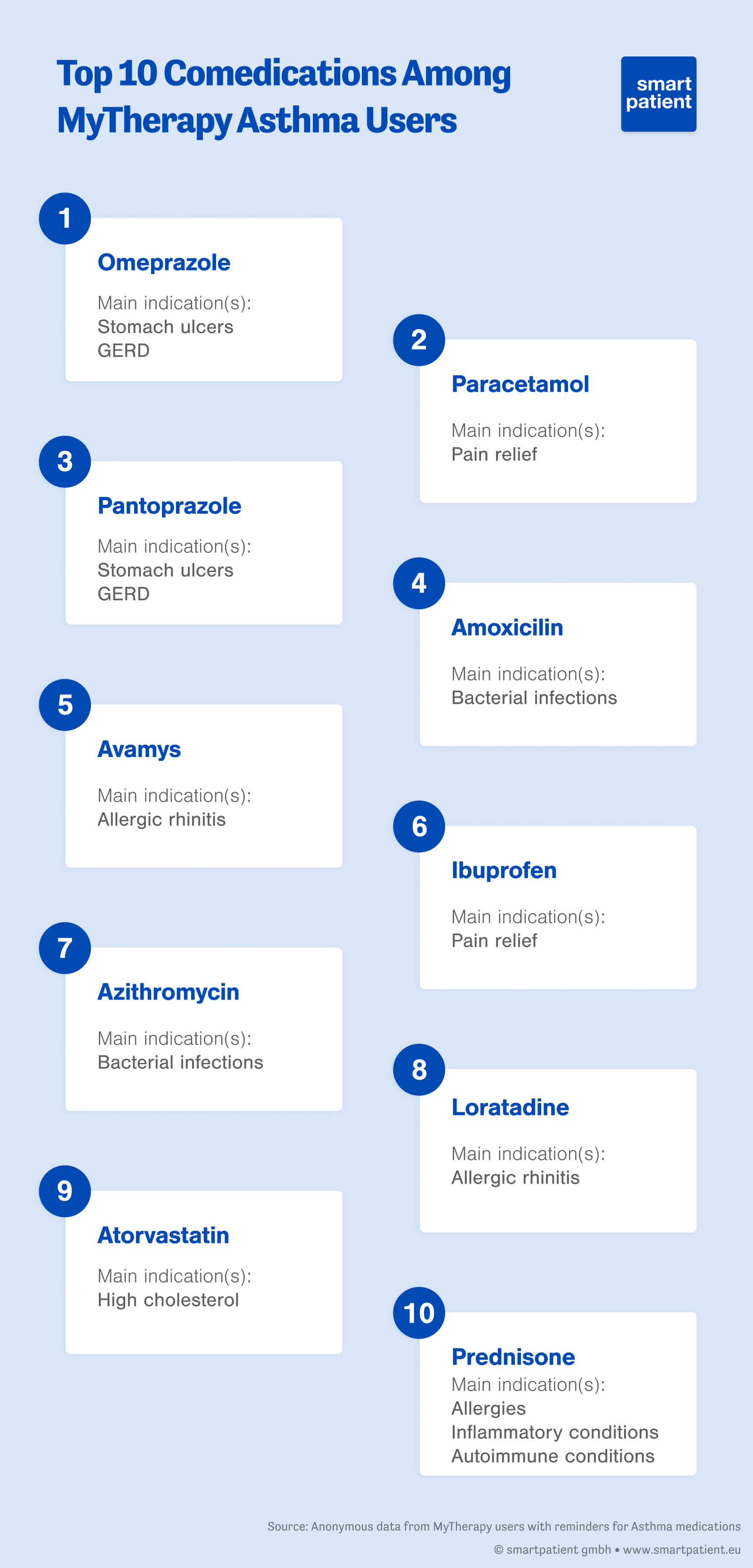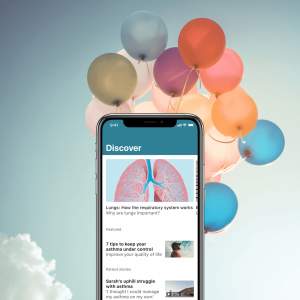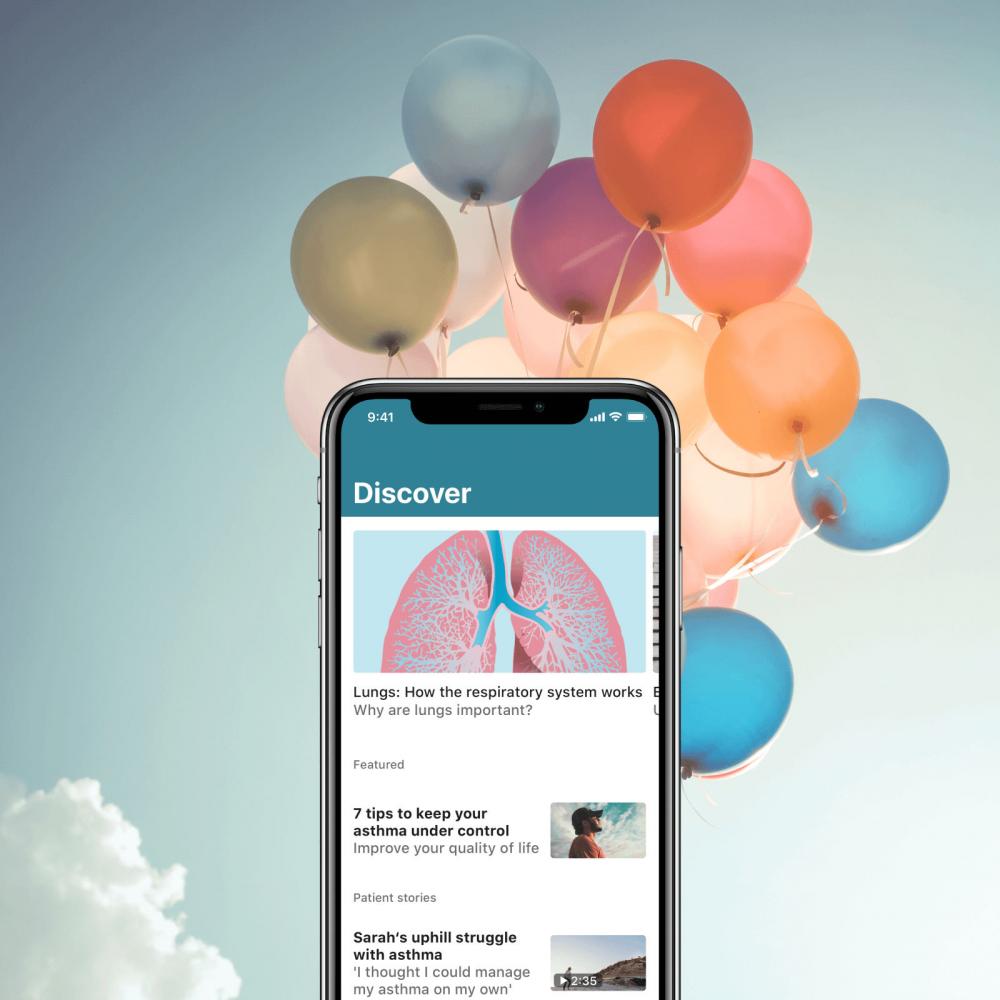Asthma Patient Support: Understanding Asthma Patients with Real-World Data
Data from over 50,000 MyTherapy users taking asthma medications highlight why pharma’s disease-centric digital programs fail to engage users or support their wider health management needs

- Tens of thousands of users rely on MyTherapy for not only their asthma treatment, but a wide range of comorbidities
- Pharma’s disease- and drug-centric digital patient support offerings often still fail to address users’ real needs
- ‘MyTherapy for Asthma’ aims to deliver the best of both worlds: MyTherapy’s existing broad functionalities with an additional layer of support tailored towards asthma
Tens of thousands of people living with asthma use MyTherapy to manage their treatment, the majority of whom have a diverse set of health management needs. Beyond reliever inhalers, countless asthma patients use MyTherapy for co-medications and wellbeing symptom checks. With the help of our real-world data from users living with asthma, we can see why pharma must move away from its indication-centric paradigm for digital patient support.
Real-World Data on Asthma: Questioning Pharma’s One-Size-Fits-All Drug Approach
The MyTherapy app reminds thousands of users to take their asthma medications every day, along with a wide range of drugs used to treat other conditions. Moreover, many users track values such as blood pressure and weight, not concerns one would typically associate with asthma and a reflection of the fact that users require broader health management functionality.
Among the most common comedications are those used to treat conditions such as COPD and cardiovascular disease.
Among the 53,000 people with reminders scheduled for asthma medications, there are over 136,000 additional reminders set up.

There are tens of thousands of different reminders scheduled, some with as few as a single user, some (vitamins, omeprazole, blood pressure tracking) are used by over 1,000.
These figures support the well-known fact that comorbidities are prevalent among people living with asthma. Why should pharma continue pumping out digital patient support and engagement programs that treat users as ‘asthma patients’ rather than supporting their wider needs?
Introducing Patient-Centric Principles in Pharma’s Asthma Support
As digital patient support programs emerge and continue to integrate into healthcare, we would expect to see asthma support programs go further and address the multitude of challenges asthma patients face, from managing their comedications to tracking their wellbeing symptoms.
However, we see the business model of pharma remain unchanged and unchallenged as they commission a new development of a new app and target solely asthma patients or the specific treatment. The outcome: an app that fails to engage users and is left largely neglected once launched. Cases in point are GSK’s AsthmaApp and PneumoDoc, with both apps having an average rating under 2.6 and have been updated only a handful of times.
Despite these apps being developed and presumably meeting the desired criteria, they reflect the issue of only addressing a small subset of ways that people with asthma manage their health. These apps fail to support each person individually with asthma, as well as acknowledge the fact that each person faces their own challenges and specific requirements, whether that means managing comorbidities or support in keeping track of symptoms and wellbeing.
With a myriad of asthma patients who live with comorbidities such as allergic rhinitis, COPD, and GERD, it is hardly surprising that very few individuals will benefit from standardized disease or drug-focused patient support offerings. As a result, it leads to pharma’s PSPs receiving low levels of adoption and even lower levels of retention.
User-Centric and Open Approach: Why Pharma Is Betting On ‘MyTherapy for Asthma’
To date, tens of thousands of users already manage their asthma treatment using the MyTherapy app, with a high percentage also managing comorbidities. ‘MyTherapy for Asthma’ aims to fulfill the unmet need for support by putting the patient at the center. By releasing an asthma-specific layer on top of MyTherapy, users can continue to benefit from the app’s underlying capabilities while accessing the more tailored disease support that is typically the sole focus of pharma’s programs. For pharma, we can provide a further level of custom functionality and content for users taking specific medications, while also tapping into our userbase for patient insights and user-generated feedback.
Click here to learn more about MyTherapy for Asthma – or get in touch, if you want to learn more about our launch pipeline in further indications.




